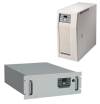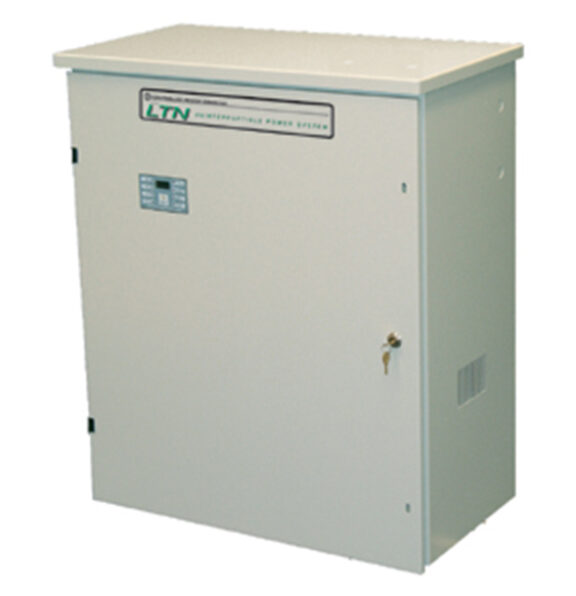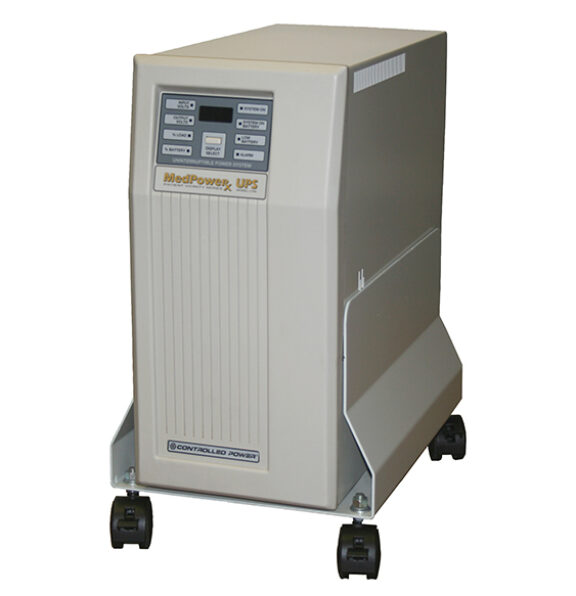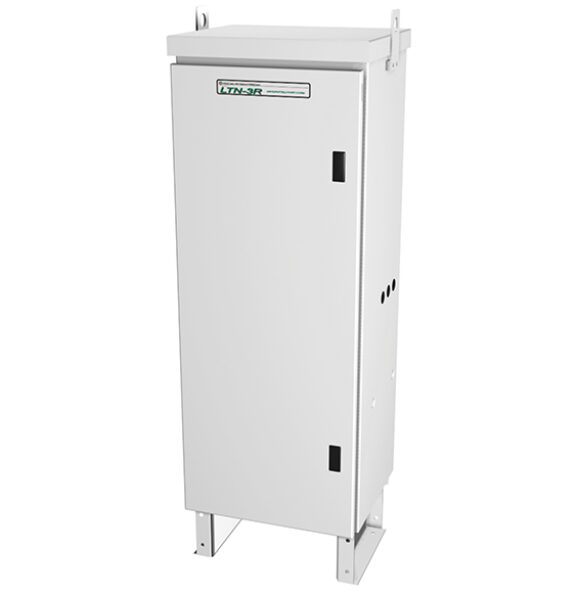Our team is here to support you and solve your power challenges. Connect with our responsive experts today to learn about our customized power solutions and products.
Models LT & LTR (700VA - 2.1kVA)
The Model LT (tower style cabinet) and Model LTR (rack mount cabinet) are single-phase, seamless transfer, uninterruptible power supplies. These products provide premium power to various types of loads, including industrial and information technology. The overall function of the Model LT and Model LTR is to take polluted, fluctuating, and erratic electrical power and purify it, resulting in well-regulated, clean, uninterrupted, computer-grade power. Up to 30 minutes of internal battery backup is provided, model-dependent, with external battery options available providing runtimes of 60 minutes or more at full load.
Applications
- Networking
- High-Performance Workstations
- Voicemail/Information Technology
- Communication Closets
- Transmission Repeaters
- Supervisory Control and Data Acquisition (SCADA) Systems
- Distributed Control Systems (DCS)
- Critical Instrumentation
- Point-of-Sale Computers

Product Specifications
Features and Benefits
- Steady, regulated voltage to +/- 3% provides proven performance and extends the life of your equipment.
- Highest level performance sine wave output matches your system’s requirements.
- 100% power conditioning.
- No-break, continuous power provides seamless transfer to back-up power and prevents data loss.
- Optional extended battery runtimes.
- Built-in, computer-grade, power purifying isolation transformer protects the load from even the most-damaging power disturbances.
- User-friendly status and diagnostic indicators.
- Optional NetMinder Ethernet/MODBUS adapter for remote monitoring.
Performance Specs
- Voltage Regulation: +/- 3%
- Load Regulation: Typically better than +/- 3%
- Overload Capability: 125% for 10 min
- Surge Capability: 150% of rated output
- Input Operating Range: +10 to -40% (typical)
- Input Current THD: < 5%
- K-Factor: 30 or better
- Operating Temperature: 0°C to 40°C
- Common Mode Noise Attenuation: 120dB
- Transverse Mode (Line) Noise Attenuation: 70dB
- Spike Attenuation: 3000:1
- Crest Factor: 3.5:1
Single Phase Sizes
- 700VA, 850VA, 1.0kVA, 1.2kVA, 1.4kVA, 1.6kVA, 1.8kVA, 2.1kVA
Frequently Asked Questions
Are the LT u0026 LTR standby uninterruptible power systems?
No. Both use seamless transfer, ferroresonant technology to secure optimum performance. Unlike standby systems that do nothing until power fails, the LT u0026 LTR models condition, regulate, and filter the power 100% of the time. The load receives a steady, spike-free, sine wave voltage, regardless of whether the incoming power is in or out of acceptable range.
How do the LT u0026amp; LTR regulate voltage?
The LT u0026 LTR models incorporate a highly efficient ferroresonant transformer that produces a steady output voltage over a wide range of input voltages. Even in severe brownout conditions, both models deliver regulated voltage to within +/-3% without using battery power.rn
How do the LT u0026 LTR correct for bad power?
The ferroresonant transformer remains in the power circuit 100% of the time. Since the transformer is designed to pass only 60Hz (50 cycles also available, if required), the power distortion reflected in the other frequencies will not be present in the output. The LT u0026 LTR models correct for bad input voltage waveforms with distortion levels as high as 40%. Most standby UPS units will not tolerate over 7% distortion, and they switch to battery backup. The LT u0026 LTR models preserve the battery power for outages only.
What level of TVSS (surge) protection is offered by the LT u0026 LTR?
The limited protection that a standby UPS offers is from its TVSS circuit. The typical TVSS protection is no more than a couple of dime- to nickel-sized metal oxide varistors (MOVs), offering limited and temporary protection. In contrast, the LT u0026 LTR models protect the load with 15-plus pounds of high-grade transformer steel. The transformer absorbs the high-energy transients, leaving the load solidly protected, and also replenishes the energy where notching and reverse spiking occur.
Do the LT u0026 LTR improve the operation of the connected equipment?
Yes. The output filter circuit removes unwanted frequencies generated by non-linear loads. This characteristic lowers the high load current demand and improves the power factor. The load draws less current and produces much less heat, increasing its efficiency and extending its life.
How is it that the LT u0026 LTR correct for ground noise when other uninterruptible power systems of similar VA sizes do not?
The LT u0026 LTR models use a high-level isolation, ferroresonant transformer for power conditioning. Only an isolation transformer removes common mode noise (the noise generated on the ground lead). Most other uninterruptible power systems use an autotransformer for some voltage correction functions and ignore the need for common mode noise attenuation.
How do the LT u0026 LTR correct for improper site wiring?
Site wiring is always an unknown. There may be voltage variations, ground current that causes disruptive operation (unsolvable with TVSS), mixed grounds, etc. The LT u0026 LTR models’ ferroresonant transformer generates the equivalent of a new power source dedicated to the load. It creates a new clean ground reference and establishes a central ground point for all loads. The new ground assures the data spike attenuation networks are at the most optimal location (the shortest lead length to ground).rn
How do the LT u0026 LTR provide superior isolation compared to typical units of the same size?
Most standby uninterruptible power systems just pass the incoming power directly to the load without any regulation, power conditioning, and/or isolation. The LT u0026 LTR models use a special ferroresonant isolation transformer for power purification and isolation.
Do the LT u0026 LTR do anything to correct for load-generated harmonics?
Yes. The LT u0026 LTR models’ ferroresonant transformer acts as a band pass filter, allowing only 60 cycles to pass (50 cycles also available, if required). Load-generated noise and harmonics are trapped in the output of the UPS, preventing the unwanted harmonics from reaching the input power source. Standby uninterruptible power systems simply don’t correct for harmonics.




